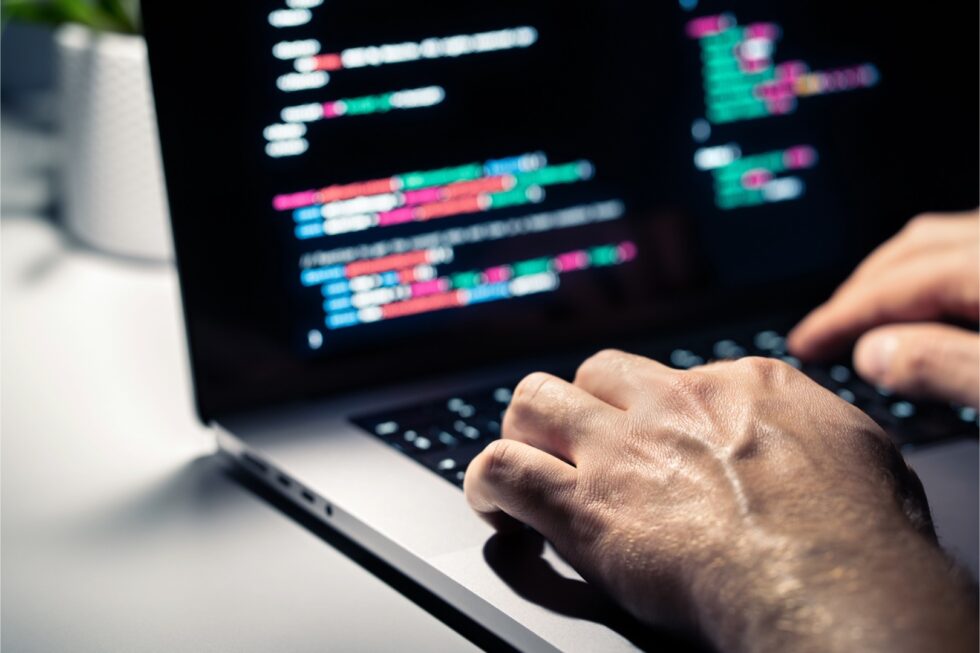
MIT Media Lab Innovator Gauri Nanda—Inventor of Clocky®—Needs TLO Support.
Technology transfer plays a critical role in technological progress and innovation. Universities and university-based researchers are responsible for creating some of this country’s most important technological innovations. The internet browser (Netscape), the internet search engine (Google), and numerous biotechnologies all were developed at U.S. universities.
Universities like Massachusetts Institute of Technology (MIT) were pioneers who showed other schools how inventions created in the classroom and the laboratory can lead to commercialization and entrepreneurship. MIT’s Media Lab is a great example. The Media Lab boasts a high number of faculty who have been founders of start-up companies who nurtured innovation by their students. Consistent with that nurturing environment, MIT’s Media Lab also implemented a licensing program that permitted Media Lab students to freely commercialize their inventions.
But recently when MIT Media Lab graduate Gauri Nanda encountered cheap Chinese counterfeits of her invention and she needed to enforce her patent rights, suddenly the MIT Technology Licensing Office (TLO) was not interested in protecting the innovation fostered at the MIT Media Lab. This shows that there may be a disconnect between the innovation and resulting patent rights that universities like MIT help their students develop, and the need for the enforcement of those rights once infringers move into the market as they invariably do.
Nanda’s Clocky® is the Alarm Clock that Drags you Out of Bed, Literally.
Nanda’s class project for Clocky® transitioned into a global sensation and a groundbreaking invention in 2005. Clocky’s standout feature lies in its mobility – when the alarm activates, the clock rolls off the bedside table, traversing the room on wheels, compelling the owner to physically rise from bed to turn it off. This ingenious design addresses the common issue of repeatedly hitting the snooze button, a struggle Nanda herself experienced as a graduate student at MIT. The transformation of the waking-up routine into a playful and interactive experience resonated well with users.
After forming her own company, Nanda dedicated a year and a half to extensive research and development before commercializing the product. She embarked on a press tour that would last years, learned everything from manufacturing to retailing to customer service. Now, eighteen years later, and after rave reviews, Clocky remains a popular choice, especially for heavy sleepers.

The Knock-offs Chase Clocky; Will they Beat Nanda?
Gauri discovered the Clocky knockoffs in Marshalls, HomeGoods, and TJMaxx stores in the run-up to Christmas 2023. The knock-offs hit the shelves just in time for Black Friday. The maker listed on the box was Merkury Innovations and the product copied Clocky in every way.
Merkury Innovations was a name known to Gauri. They contacted her earlier the year looking to distribute the popular alarm clock, but went silent as the holidays approached.
When our firm reviewed the case for litigation, we recognized that while the trademark and trade dress registrations Gauri received for Clocky were valuable, they were not as powerful as Gauri’s patent. However, Gauri does not own her patent. Gauri is listed as the only inventor, but MIT retained ownership of the patent. And while Gauri has the right to use the patent for her business, that right—granted by the MIT Media Labs “Benefits of MIT Media Laboratory Sponsors” document—is limited to a non-exclusive license.
Clocky is Already Running, Now it Needs Standing.
This meant that Gauri lacked “standing” to sue for infringement. When a patent infringement action is brought by a licensee (as opposed to a patentee), the standing inquiry asks whether the licensee “has a sufficient ownership interest in a patent” to be entitled to sue for infringement. Propat Int’l Corp. v. Rpost, Inc., 473 F.3d 1187, 1188 (Fed. Cir. 2007). Licensees typically fall into three categories: (1) licensees holding “all substantial rights under the patent,” Speedplay, Inc. v. Bebop, Inc., 211 F.3d 1245, 1250 (Fed. Cir. 2000); (2) licensees holding exclusionary rights, but not all substantial rights to the patent Abbott Lab. v. Diamedix Corp., 47 F.3d 1128, 1133 (Fed. Cir. 1995); and (3) licensees holding less than all substantial rights and lacking exclusionary rights to the patent. Propat Int’l Corp., 473 F.3d at 1194.
Gauri’s license fell into the third category. Her only option to get standing to sue was to obtain the rights she needed from MIT. Universities frequently sue for infringement, and MIT is no exception. Gauri expected that MIT would cooperate and agree to work with her so she could protect her business from the knock-offs at the discount stores.
For an institution like MIT, the benefits of working with—instead of against—invention entrepreneurs like Gauri are obvious. The Media Lab describes itself an “interdisciplinary creative playground rooted squarely in academic rigor” [that] “focus[es] not only on creating and commercializing transformational future technologies but also on their potential to impact society for good.”
Clocky Needs MIT’s Help; MIT has Nothing to Lose but Why Won’t they Help Gauri Nanda?
Gauri believed that allowing counterfeiters to knock-off her patented invention would undermine the mission of the Media Lab. MIT would see that clearly. And so did our firm. Plus, there was no downside for MIT in supporting Gauri. Only upside. For example, MIT could earn a share of the proceeds or at least recoup their maintenance fees on the patent in the process. Therefore, we inquired of the MIT Technology Licensing Office how Gauri could obtain the rights necessary to sue Merkury Innovations and stop the cheap counterfeits from ruining Clocky’s 2023 Christmas season.
We emailed. We emailed again. We asked nicely. We reminded MIT several times. We requested a prompt response. We were assured one was coming. And then three weeks later, with the holiday 2023 shopping season almost complete, this response came: “Upon consideration, MIT is declining to enter into any agreement that would lead to an enforcement action at this time for this matter.” In other words, a big fat NO.
Where does this leave Gauri? Pretty much out of luck. Gauri is a small entrepreneur with a small business. The legal fees required to take on a knock-off artist like Merkury Innovations on an hourly basis are prohibitive. The legal fees alone could bankrupt Clocky and take her company down in the process. Merkury knows that. That is why Merkury makes knocking off other companies’ inventions part of its business model.
But MIT should do better. The MIT Media Lab’s stated mission is “to create transformative technologies, experiences, and systems that enable people to reimagine and redesign their lives.” Gauri Nanda did exactly that as a Media Lab student when she invented Clocky. She needs MIT’s support now and MIT should be committed to supporting her, not working against her and other innovators who create transformative technologies while earning their degrees at MIT.
Tell MIT to Give Gauri Nanda and Clocky the Right to Sue Infringers!
Do the right thing MIT: give Gauri Nanda the rights she needs to take action against the counterfeiters of Clocky. If you want to help Gauri and Clocky, send the MIT Technology Licensing Office an email and tell them to give Gauri and Clocky the rights they need to protect American innovation. Email the TLO at tlo@mit.edu!
Joel B. Rothman represents clients in intellectual property infringement litigation involving patents, trademarks, copyrights, trade secrets, defamation, trade libel, unfair competition, unfair and deceptive trade practices, and commercial matters. Joel’s litigation practice also includes significant focus on electronic discovery issues such as e-discovery management and motion practice relating to e-discovery.
Joel is Board Certified in Intellectual Property Law by The Florida Bar, “AV” rated by Martindale-Hubbell, and rated 10.0 (superb) by Avvo. Joel is a former chair of the Intellectual Property Committee of the Business Law Section of The Florida Bar and a member of the Section’s Executive Council. Prior to relocating to Florida, Joel was an Assistant District Attorney in the Rackets Bureau, Investigations Division, of the Bronx District Attorney’s Office.
Joel received his J.D. with honors from the Benjamin N. Cardozo School of Law, Yeshiva University in 1991, and his B.A. magna cum laude from the State University of New York at Albany in 1988. Joel is admitted in Florida, Georgia, Washington State and New York, as well as many federal courts around the country.







How sad for Gauri and Clocky. It shows yet another flaw in our patent system, one that has affected many inventors – the old it’s mine and nobody can have it even if it rots on the shelf. I’ve personally seen engineers with an idea that hasn’t been reduced to practice, who works for a large corporation. They try to interest the corporation to give them some time and a small amount of funding to explore reducing the idea to practice and developing a new product, but the company won’t even discuss it. The engineers are often forced to quit and found a startup. Then, when the invention is successful the company comes back, waiving an employment agreement in the air, and claiming the invention (that they previously had no interest in) is theirs. Just look at the explosion of US semiconductor companies as one example. The US Constitution explicitly states to promote the progress of science and useful arts, by securing for limited times to authors and inventors the exclusive right to their respective writings and discoveries, their being perhaps the most important word therein. In my view that means that the inventor that conceived the invention is the owner and that property shouldn’t be taken away before it even exists by some employment agreement or the like. I think that sort of employment agreement is illegal in CA, but Congress should get together and pass a law to protect the inventor from such predatory practice.
J.C. That is a very good point. When you work for a company, perhaps they could get a non-exclusive license if you were hired to invent it. But how can they claim to own something you create in the future that may or may not ever exist and nobody knows what the value will be? This is a power play by corporations. Most people sign these IP transfer agreements under duress. If they don’t sign the agreement, they don’t will not get the job. Often if they don’t get the job, they don’t pay their rent or buy groceries, so they are compelled to give the rights to their property away. It transfers wealth from the little to the big under the hand of government.
Hi Joe/ innovation gadfly. I have been in a similar situation with Purdue University (actually worse, they didn’t even license me my own invention due to the so called ownership of the patent by university, despite the university policy explicitly saying that inventors have 14 months express license right). THey have gone one step ahead have now filed another similar patent just to remove my name from the earlier one. I have suffered a lot and I thought I am the only idiot fighiting against a 3B$ budget university whereas I am just a 30 year old individual. How can I compete? But I have continued to fight. Glad to see that you are bringing out these stories first time I have seen that this is not a problem just being faced by me! IN my case when I persuaded university to go for lawsuit infringement against Gatorade since they copied our invention. they refused!